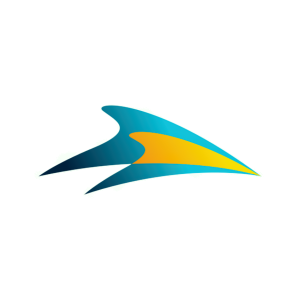SeaWorld and Hubbs-SeaWorld Research Institute Continue Five Decades of Advancing Marine Conservation with Critical New Research, Continued Reintroductions of a Depleted Species, and Response to 50+ Animals in Distress
Rhea-AI Summary
SeaWorld Parks & Entertainment (NYSE: SEAS) and the Hubbs-SeaWorld Research Institute (HSWRI) celebrate over 50 years of marine conservation in 2021. Key achievements include the publication of significant scientific research, successful reintroductions of white seabass, and rescue operations for over 50 marine animals. Notable projects include the establishment of guidelines to protect marine mammals from human-made noise and efforts to restore degraded habitats like the Indian River Lagoon. SeaWorld continues to support vital research and animal rescue initiatives.
Positive
- Successful release of nearly 60,000 white seabass, aiding in species recovery.
- First scientific guidelines established for protecting marine mammals from noise pollution.
- Collaboration with HSWRI on marine habitat restoration efforts.
Negative
- None.
News Market Reaction 1 Alert
On the day this news was published, SEAS declined 0.62%, reflecting a mild negative market reaction.
Data tracked by StockTitan Argus on the day of publication.
ORLANDO, Fla., Dec. 29, 2021 /PRNewswire/ -- SeaWorld Parks & Entertainment (NYSE:SEAS) and the Hubbs-SeaWorld Research Institute (HSWRI), a non-profit scientific research organization committed to marine life conservation, are proud to share that in 2021 the partnership continued its five decades of advancing marine conservation with, among other things, the publication of breakthrough scientific research, continued reintroductions of a depleted species to the wild, and responding to more than 50 marine animals in distress on the West and East coasts of the U.S., including dolphins and whales.
Before there were SeaWorld parks, there was HSWRI. Established in 1963 in recognition of the importance of developing a non-profit research institute focused on ocean health, HSWRI and its team of scientists continue their work today to advance ocean science and further marine animal education. Today SeaWorld partners closely with the institute, providing financial support, collaborating on conservation research, and serving as a rescue and rehabilitation source for sick, injured, and orphaned marine animals.
"The SeaWorld and HSWRI partnership enables both organizations to provide effective solutions to conflicts that arise between human activity and marine wildlife," said Don Kent, President and CEO of HSWRI. "Through ground-breaking research and dedication to animal and ocean science, we can combat the challenges threatening the health of our marine ecosystems and the animal populations that depend on them. Our individual efforts would not be as effective without this unique partnership."
Situated near the SeaWorld parks in San Diego and Orlando, HSWRI works closely with the zoological teams there to research and study the diverse marine animal populations under human care. What they learn is applied to identifying and solving many of the challenges facing species in the wild. For example, in 2021 HSWRI advanced these important projects:
- First Scientific Guidelines for Protecting Marine Mammals from the Effects of Human-Made Noise: Hubbs scientists have been collecting hearing data on marine mammals at SeaWorld parks since the 1970s, helping set the first science-based guidelines for protecting marine mammals from the negative effects of noise. This year, Dr. Ann Bowles, a Senior Research Scientist at HSWRI, included findings from the partnership's research in a report on the severity of marine mammal behavioral responses to human-made noise. The report provides important guidance allowing scientists to document short-term behavioral changes in response to human-made noise with a goal of reducing negative impacts on animals.
- Restoring Wild Populations of White Seabass: In 1986, scientists at HSWRI began releasing cultured white seabass into coastal waters in southern California as part of the Ocean Resources Enhancement and Hatchery Program. The program, first conceptualized by former SeaWorld founder and Chairman Milton Shedd, aims to restore wild populations of white seabass after the species was believed to face depletion to less than
10% of its historic level in the 1980s due to overfishing. This year the project successfully released nearly 60,000 white seabass into the wild. Water Quality Specialists at SeaWorld provided necessary expertise and assistance in maintaining fish life support systems at the hatchery to birth and raise the white seabass released. - New Species of Bacteria Found on Dolphins Helps Preserve Population Health: Wendy Durden, Research Scientist II at HSWRI, co-authored research and published a paper documenting a new species of bacteria found on dolphins in the Indian River Lagoon. That new bacteria could pose a toxic or pathogenic threat to dolphins and its discovery could lead to improving the health and longevity of dolphins both in the wild and in human care.
"We are so proud that HSWRI will celebrate 60 years next year and are honored to partner so closely with them in the conservation of marine life," said Dr. Chris Dold, HSWRI Board member and Chief Zoological Officer for SeaWorld Parks and Entertainment. "The value of the research conducted by the institute cannot be overstated as it gives us actionable proof that problems marine animal populations are facing stem from changes in the viability of their natural habitats caused by global warming, nutrient overloading and habitat loss. Human impacts affect not only the animals, oceans, and waterways around us, but those around the world. Our goal is to minimize or mitigate those impacts."
For example, the Indian River Lagoon, a main habitat for manatees, has been severely impacted by a depletion of sea grass that is the primary diet of this threatened species. HSWRI is collaborating on a program to increase seagrass in the Indian River Lagoon for habitat restoration. Scientists are collecting long-term data to evaluate how well the habitat restoration efforts are working and if aquatic mammals are responding by foraging more often in these newly replanted areas.
In 2021, HSWRI received calls for more than 50 wild marine animals in distress, including whales and dolphins. Rescued animals unable to be immediately returned to their natural environment are transported to SeaWorld facilities for care. Healthy animals are then released back to their natural environments while those deemed non-releasable due to chronic health conditions are provided long term care in accredited zoos and aquariums. In addition to coming to the aid of live animals, extensive workups are performed by HSWRI on deceased animals that strand along the shoreline. By understanding the causes of illness and mortality, such as entanglement in marine debris or harmful algal blooms, scientists can propose means to improve ecosystem health and prevent future injuries and deaths.
About Hubbs-SeaWorld Research Institute
Hubbs-SeaWorld Research Institute, founded in 1963 to conduct research in the tradition of world-renowned scientists Dr. Carl L. and Laura C. Hubbs, is a public, non-profit charity dedicated to providing effective solutions to conflicts that arise between human activity and the natural world. Hubbs-SeaWorld scientists apply sophisticated technologies to seek the solutions that protect and conserve marine animals while benefiting humans and their reliance on marine resources. The Institute also recognizes the critical importance of scientific literacy as a foundation for competing in the highly technical and competitive global economy and strives to provide innovative education programs to promote scientific literacy among our children and young scientists.
About SeaWorld Parks & Entertainment
SeaWorld Entertainment, Inc. (NYSE: SEAS) is a leading theme park and entertainment company providing experiences that matter, and inspiring guests to protect animals and the wild wonders of our world. The Company is one of the world's foremost zoological organizations and a global leader in animal welfare, training, husbandry, and veterinary care. The Company collectively cares for what it believes is one of the largest zoological collections in the world and has helped lead advances in the care of animals. The Company also rescues and rehabilitates marine and terrestrial animals that are ill, injured, orphaned, or abandoned, with the goal of returning them to the wild. The SeaWorld® rescue team has helped more than 39,000 animals in need over the Company's history. SeaWorld Entertainment, Inc. owns or licenses a portfolio of recognized brands including SeaWorld®, Busch Gardens®, Aquatica®, Sesame Place® and Sea Rescue®. Over its more than 60-year history, the Company has built a diversified portfolio of 12 destination and regional theme parks that are grouped in key markets across the United States, many of which showcase its one-of-a-kind zoological collection. The Company's theme parks feature a diverse array of rides, shows and other attractions with broad demographic appeal which deliver memorable experiences and a strong value proposition for its guests.
Media Contact:
Mediarelations@seaworld.com
![]() View original content to download multimedia:https://www.prnewswire.com/news-releases/seaworld-and-hubbs-seaworld-research-institute-continue-five-decades-of-advancing-marine-conservation-with-critical-new-research-continued-reintroductions-of-a-depleted-species-and-response-to-50-animals-in-distress-301451499.html
View original content to download multimedia:https://www.prnewswire.com/news-releases/seaworld-and-hubbs-seaworld-research-institute-continue-five-decades-of-advancing-marine-conservation-with-critical-new-research-continued-reintroductions-of-a-depleted-species-and-response-to-50-animals-in-distress-301451499.html
SOURCE SeaWorld Parks & Entertainment








